Ever witnessed your cat nibble, sniff, or rub her body against the leaves of a plant? There may be a variety of reasons for her strange actions. She could be curious about the plant, unknowingly lack fiber and certain nutrients in her food, or simply enjoy its texture or taste.
As a cat owner, her actions may not be alarming if the plant is non-poisonous. On the other hand, accidents may occur if the plant she approaches contains natural toxins that help protect it. Similarly, problems may arise if your feline pet accidentally enters a property that contains toxic plants, or if she escapes her harness during a walk and approaches potentially lethal foliage.
To keep your cats safe, it’s best to be familiar with these 10 types of plants that are toxic for them. Some of them are popular potted houseplants, while others can thrive both indoors and outdoors:
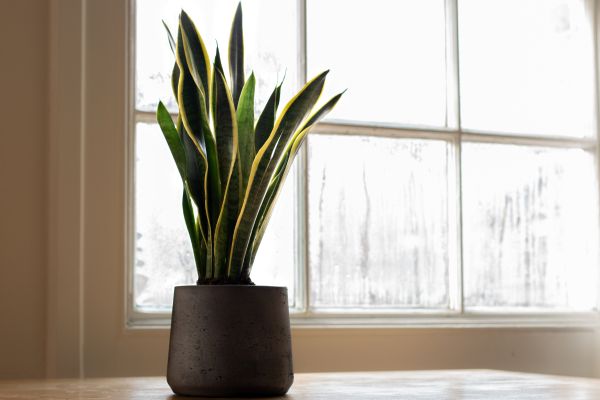
1 Snake Plants
Also known as: Golden bird’s nest, good luck plant, Saint George’s sword, mother-in-law’s tongue, and viper’s bowstring hemp
Scientific name: Dracaena trifasciata
Family: Asparagaceae
Genus: Dracaena
Physical characteristics: Deep green leaves that grow in a stiff, upright, and circular form; other species have silvery white or yellow stripes on their margins
Harmful toxins and its effects on cats: Saponins can cause skin irritation, swelling or burning sensation (in the lips, mouth, tongue, and esophageal tissues), nausea, vomiting, and diarrhea in feline pets.
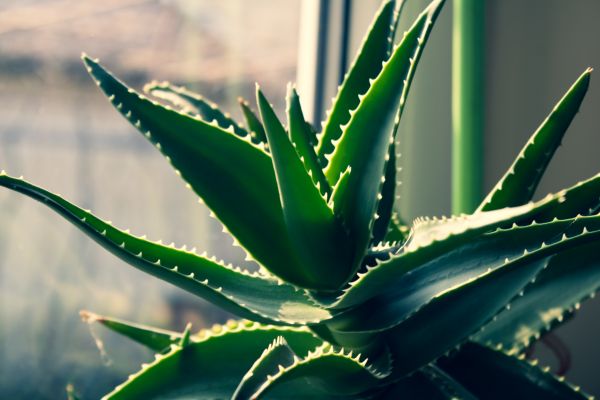
2 Aloe Plants
Also known as: Burn plant and elephant’s gall
Family: Asphodelaceae
Genus: Aloe
Physical characteristics: Its thick, fleshy leaves grow tall in a rosette pattern; depending on the species, the succulent leaves may have one solid colour, or have stripes or blotches
Harmful toxins and its effects on cats: Dangerous anthraquinones and saponins are released when a cat eats or chews on an aloe plant. These can cause nausea, diarrhea, lethargy, low blood sugar, and vomiting.
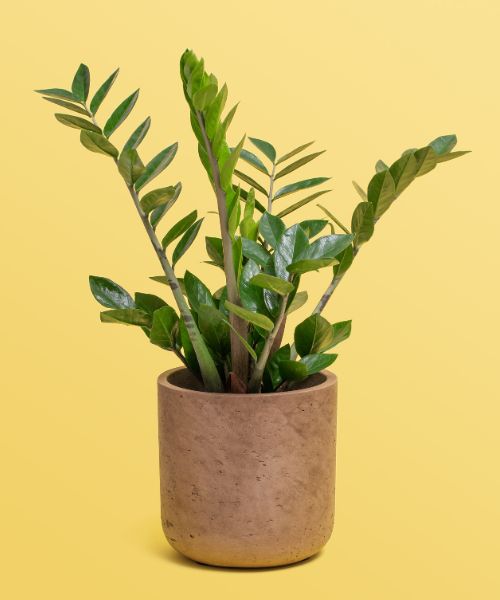
3 ZZ Plants
Also known as: Eternity plant, aroid palm, emerald palm, Zuzu plant, and Zanzibar gem
Scientific name: Zamioculcas zamiifolia
Family: Araceae
Genus: Zamioculcas
Physical characteristics: Shiny foliage with upward-growing dark green leaves; the leaves are pinnate, which look like feathers
Harmful toxins and its effects on cats: Exposure to calcium oxalate can cause cats to experience oral pain and swelling, excessive drooling, foaming at the mouth, vomiting, diarrhea, and upset stomach.
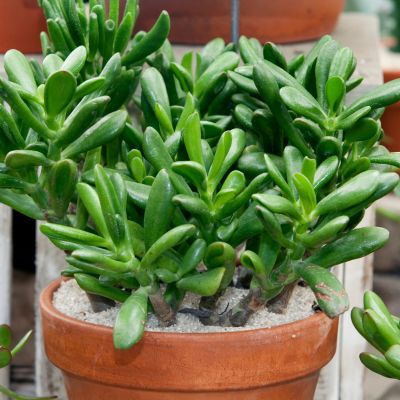
4 Jade Plants
Also known as: Dollar plant, friendship tree, lucky plant, baby jade, Chinese/Japanese rubber plant, tree of happiness, and money plant/tree
Scientific name: Crassula ovata
Family: Crassulaceae
Genus: Crassula
Physical characteristics: Thick, glossy, smooth-looking leaves that grow in opposing pairs
Harmful toxins and its effects on cats: Its unknown principles can cause vomiting, slow heart rate, incoordination, and depression in cats.
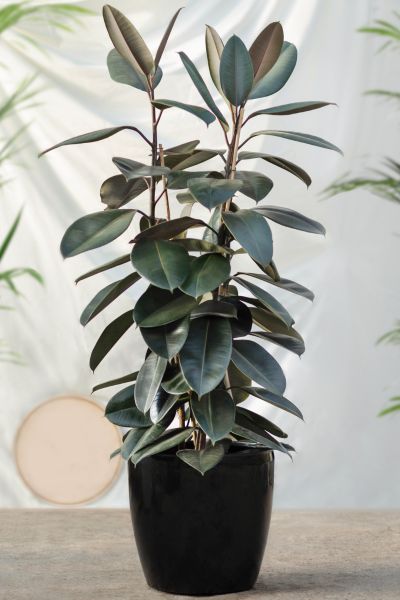
5 Rubber Plants
Also known as: Weeping fig, rubber bush/fig/tree, and Indian rubber bush/tree
Scientific name: Ficus elastica
Family: Moraceae
Genus: Ficus
Physical characteristics: Deep green or maroon-coloured leaves in a wide, oval shape; pink, white, cream, or yellow markings may be evident in some species
Harmful toxins and its effects on cats: Proteolytic enzymes and psoralens can irritate your cat’s eyes, mouth, and skin. When ingested, it can lead to excessive drooling, stomach pain, incoordination, loss of appetite, vomiting, diarrhea, and nausea.
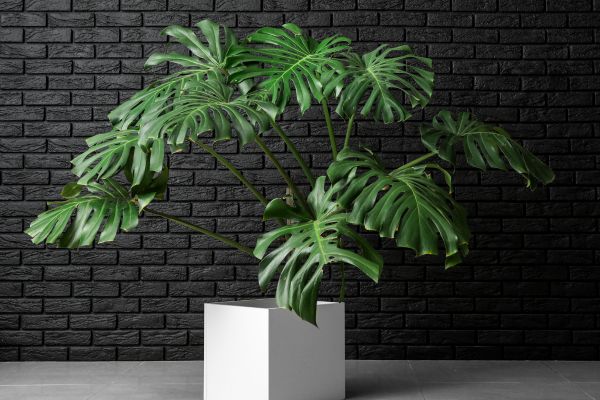
6 Monstera Plants
Also known as: Cutleaf/split-leaf philodendron, hurricane plant, ceriman, Mexican breadfruit, swiss cheese plant, mother-in-law, and window leaf plant (all common names of the Monstera deliciosa variant)
Family: Araceae
Genus: Monstera
Physical characteristics: Giant, dark green leaves with uneven-sized holes
Harmful toxins and its effects on cats: When insoluble calcium oxalates are released, it causes intense burning of the mouth, excessive drooling, foaming, difficulty in swallowing, vomiting, diarrhea, and upset stomach.
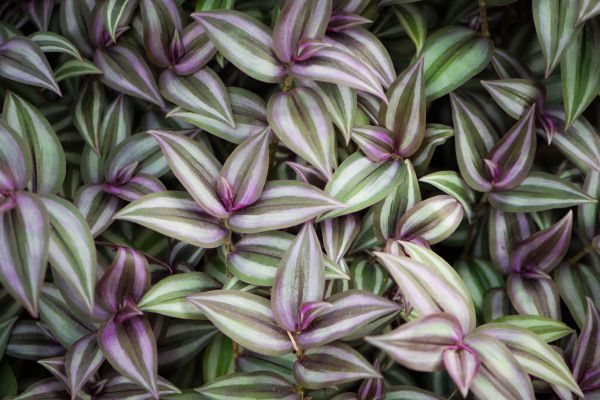
7 Wandering Jew Plants
Also known as: Inchplant, spiderwort, and dayflower
Family: Commelinaceae
Genus: Tradescantia
Physical characteristics: Climbing and trailing plants with long, thin, and lance-shaped leaves; leaves may be variegated in silver, purple, green, pink, or gold
Harmful toxins and its effects on cats: Unknown principles in the plant’s sap can cause an allergic reaction in cats. Dermal irritation includes redness, swelling, lesions, and small bumps on her chin, groin, stomach, or other affected areas. Digestive issues such as vomiting, diarrhea, or tummy ache may also occur.
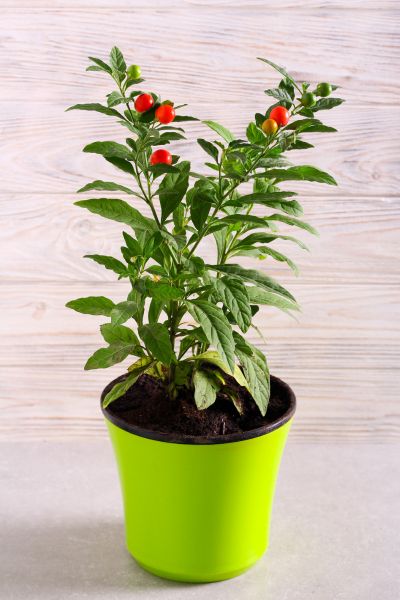
8 Tomato Plants
Scientific name: Solanum lycopersicum
Family: Solanaceae
Genus: Solanum
Physical characteristics: Sprawling vine plants that bear round, juicy fruits
Harmful toxins and its effects on cats: Alpha‐dehydrotomatine, alpha‐tomatine, and solanine are present in parts of the plant and its unripe fruits. Hypersalivation, loss of appetite, diarrhea, vomiting, severe stomach upset, depression, weakness, dilated pupils, and slow heart rate may occur after being eaten.
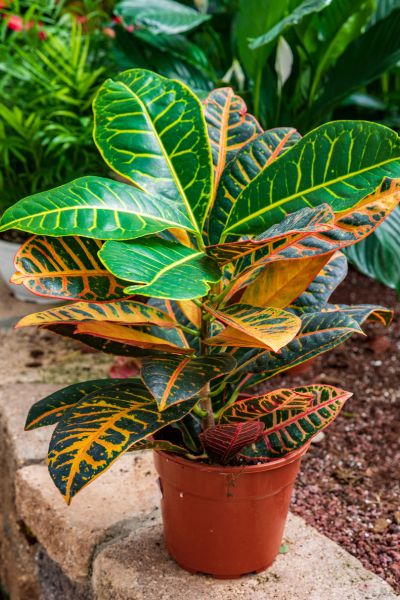
9 Croton Plants
Also known as: Fire croton, garden croton, and variegated croton
Scientific name: Codiaeum variegatum
Family: Euphorbiaceae
Genus: Codiaeum
Physical characteristics: The alternately arranged leaves are usually large, thick, leathery, and shiny, but their colour and shape depends highly on the species
Harmful toxins and its effects on cats: 5-deoxygenol, a poisonous chemical compound, can lead to skin, oral, and gastrointestinal issues in cats. Examples include excess drooling, vomiting, and diarrhea.
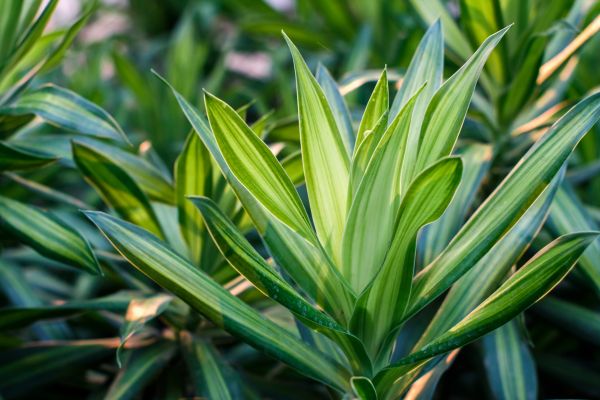
10 Corn Plants
Also known as: Ribbon plant, compact dracaena, cornstalk dracaena, and striped dracaena
Scientific name: Dracaena fragrans
Family: Asparagaceae
Genus: Dracaena
Physical characteristics: Long, narrow, oval-shaped leaves in a pretty shade of green or variegated colour
Harmful toxins and its effects on cats: Saponins can cause cats to have dilated pupils, depression, anorexia, hypersalivation, vomiting (possibly with blood), increased heart rate, and difficulty in breathing.
Always remember…
When it comes to cats and plants, the two can coexist peacefully as long as you choose pet-friendly varieties. Moreover, you should not apply poisonous fertilisers or pesticides on them and their soil. Exposing your cat to toxic chemicals may cause health conditions such as hypersalivation, vomiting, diarrhea, twitching and fitting, breathing difficulties, shock, and collapse. Skin inflammation or swelling, coma or depression, and changes in eating, drinking, and urinating may also occur.
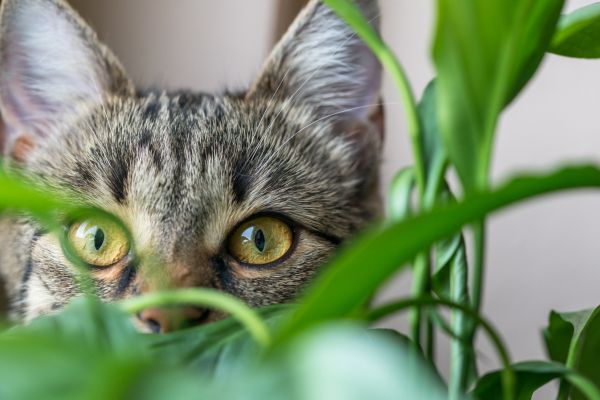
Prevent your feline pet from approaching or playing with your indoor garden through simple yet creative ways. Read this blog post to get ideas!
Leave a comment
Your email address will not be published. All fields are required.